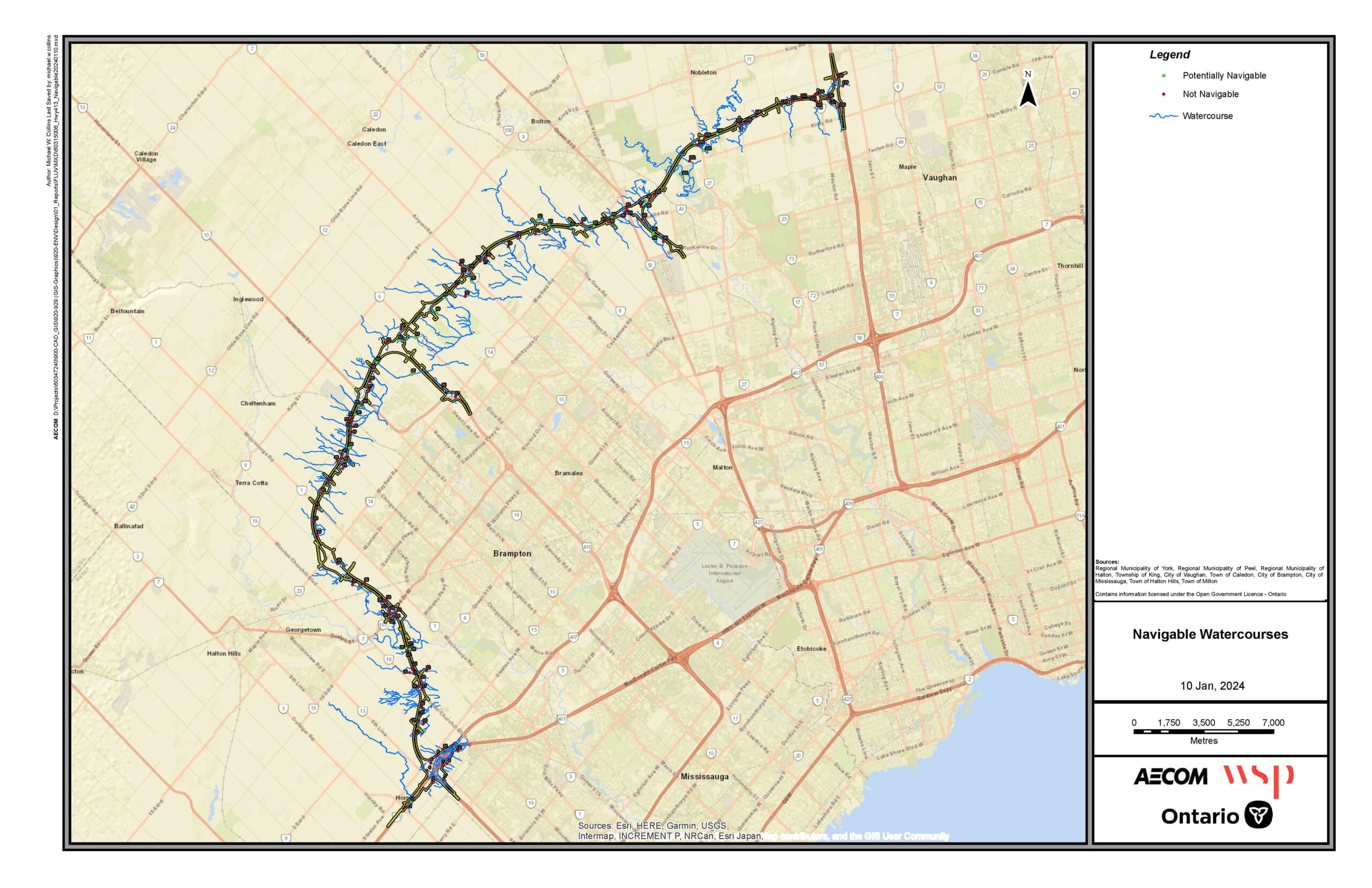The Environment
Learn about the Environmental Assessment process for the Highway 413 Project and how Ontario protects the environment when building new infrastructure.
Environmental and Agricultural Considerations
Ontario’s Greenbelt Plan recognizes the importance of infrastructure for people’s economic well-being, health and quality of life and it permits new projects provided they service the significant growth and economic development expected in southern Ontario. The province is committed to maintaining strong environmental oversight of the Highway 413 Project to minimize impacts on natural terrain. Ontario is also, taking steps to expand the Greenbelt to protect environmental, groundwater and agricultural resources for future generations.
The preferred route for Highway 413 was chosen in part to minimize impacts to the Greenbelt, and as the project moves ahead, Ontario would carefully consider all impacts of the project and its construction. For example, the protection of major watercourses, including the Credit and Humber rivers was a top priority when determining the preferred route. Proposed watercourse crossings would be designed with the intent to minimize the impacts to the watercourses, the valley lands, floodplains, fish habitat, wildlife and trail networks. This would help to minimize the project’s impact, maintain fish passage and habitat, minimize vegetation loss and protect Species at Risk.
Protecting agricultural lands is also a top consideration. While a new transportation corridor cannot completely avoid impacting agricultural land, Ontario will be undertaking an Agricultural Impact Assessment to help understand and minimize the impacts on the region’s agricultural land.
The Environmental Assessment
Ontario’s Environmental Assessment process ensures that governments and public bodies consider potential environmental effects before an infrastructure project begins. All Individual Environmental Assessments must include:
- accurately describing the undertaking (i.e., project)
- considering alternatives to the undertaking
- considering alternative methods for the undertaking
- consulting with the public
- detailing impacts and mitigation
- documenting all of the above for public review
The proposed Highway 413 Project is currently in Stage Two of the Environmental Assessment, which includes identifying the route, determining interchange locations and completing preliminary design for the new corridor.
So far in the Environmental Assessment process, Ontario has undertaken significant data collection, fieldwork and analysis, evaluated alternatives, held numerous community and advisory group meetings, engaged and consulted with Indigenous communities, and determined a preferred route. The following environmental discipline studies are being carried out during Stage Two of the Environmental Assessment:
- Fish and Fish Habitat
- Terrestrial Ecosystems
- Watercourse Crossing Analysis
- Drainage and Stormwater Management
- Fluvial Geomorphology
- Groundwater
- Landscape Composition
- Archaeological Assessment (Stages 2, 3, & 4, as required)
- Built Heritage and Cultural Heritage Landscapes
- Land Use Inventory
- Agricultural Impact Assessment (or equivalent study)
- Contaminated Property Identification and Waste Management
- Air Quality
- Noise
- Snowdrift Assessment
Stage One studied the area and looked at long-term modelling projections to determine if new road infrastructure was truly needed. The study found that even with significant investments in public transit expansion in the region, a new highway corridor would still be needed to keep up with the projected population growth.
Building infrastructure responsibly
In Stage One of the Environmental Assessment, guidelines were developed to identify ways that the impacts on the Greenbelt could be minimized. The guidelines recommend the use of “green” infrastructure and planning, design and construction practices, such as:
- Community sensitive design
- Consideration of impacts to ecology and wildlife
- Consideration of impacts to agriculture
- Stormwater management
- Designing features such as bridges to minimize environmental impacts
Environmentally-Friendly Practices and Technologies
Ontario is using and exploring environmentally-friendly practices and technologies while building major infrastructure projects, such as:
GreenPave
A system that rates asphalt and concrete pavement to assess its “greenness.” GreenPave promotes environmentally-responsible design and construction by encouraging the use of alternate fuels, local and recycled materials and reduces energy consumption, air pollutants, harmful emissions and more.
Tree Planting
Ontario supports programs that add new trees along highways and other infrastructure. For example, the Highway of Heroes program has planted nearly one million trees as a living tribute to Canada’s veterans, including more than 52,000 directly alongside Highway 401.
SmogStop Barriers
Ontario is exploring the use of noise barriers that are also designed to reduce air pollution. Emissions from vehicles are directed into channels where they react with a special photoreactive coating to reduce nitrogen oxides and volatile organic compounds into harmless by-products. The reaction is powered by sunlight and no electrical connections are required.
These methods and others like them can reduce the environmental impacts of Ontario’s major infrastructure projects like Highway 413.
© 2021 Highway 413 | Site by AECOM

